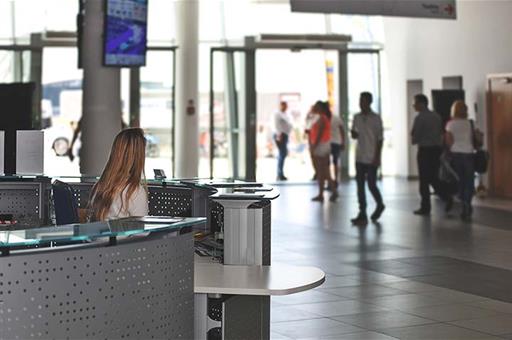The number of workers employed in the tourism sector is 2.3% higher than a year ago, reaching almost 2.6 million
News - 2024.2.8
Between October and December 2023, tourism-related activities recorded 59,311 more employees than in the same quarter of the previous year. Those employed in the tourism sector account for 12.6% of total employment in the Spanish economy.
Meanwhile, the number of active workers in the tourism sector in the fourth quarter of the year was also close to three million (3,018,820), 2.1% more than in the same period of the previous year.
The unemployment rate stood at 11.3% in the fourth quarter, 0.2% lower than in the same quarter of 2022. The percentage of unemployed women in terms of active workers (12.2%) was higher than for men (10.6%), although the gap between the two had narrowed compared to the same period of the previous year, when unemployment among women was 12.8%.
"The tourism industry is not only growing quantitatively, as this successful 2023 record of record visits and spending at the destination shows, but also - and this is more important - qualitatively, with better jobs linked to the tourism sector, a lower rate of temporary employment and a greater number of salaried employees with permanent contracts", said the Minister for Industry and Tourism, Jordi Hereu.
Ongoing increase in the number of permanent employees
In the fourth quarter, employment in hotels and restaurants increased by 5%, mainly due to the positive evolution of food and beverage services (up 7.2%). In passenger transport, the year-on-year variation was positive at 1.6% more. However, those employed in 'other tourism activities' decreased by 3.7% compared to a year ago.
The main growth in the fourth quarter was among wage earners (3.5%), the figure rising to 2,210,678, continuing the year-on-year increase of the previous ten quarters. Employees showed increases in almost all tourism activities. To this effect, the number of employees grew in passenger transport (3.9%) and in hotels and catering (7.5%), while in 'other tourism activities' it fell by 5.2%.
The number of employees in the tourism sector with permanent contracts (83.5%) increased by 6.2% this year, the tenth consecutive increase. Furthermore, employees with temporary contracts recorded a decrease of 8.4%. In this regard, the temporary employment rate in the tourism sector was 16.5%, which was lower than the 18.6% in the same period of the previous year. In terms of working hours, full-time employees accounted for 74% of all employees, a 2.2% increase.
Meanwhile, the number of self-employed individuals decreased by 3.1% compared to the same period in 2022, for a total of 465,370. Lower figures were recorded in passenger transport (-5.9%) and hotels and catering (-5%), while in 'other tourism activities' the number of self-employed increased by 5.8%.
Occupation by autonomous community
In this last period of 2023, the number of employed people grew in all the autonomous communities, except in Andalusia, the Valencian Community, the Basque Country, Castilla y León, Cantabria and Navarra.
The autonomous communities that registered the highest number of employed people from October to December were Catalonia (471,373), Madrid (432,376), Andalusia (403,590) and the Canary Islands (264,654).
The autonomous communities where the number of employed people grew most were Extremadura, with a 21.4% year-on-year increase, Ceuta and Melilla, with 19.5%, and the Balearic Islands, with 16.7%.
The autonomous communities with the highest number of tourist flows (Catalonia, the Balearic Islands, the Canary Islands, Andalusia, the Valencian Community and Madrid) together accounted for 73.6% of the total number of people employed in the sector in the fourth quarter.
Non official translation






